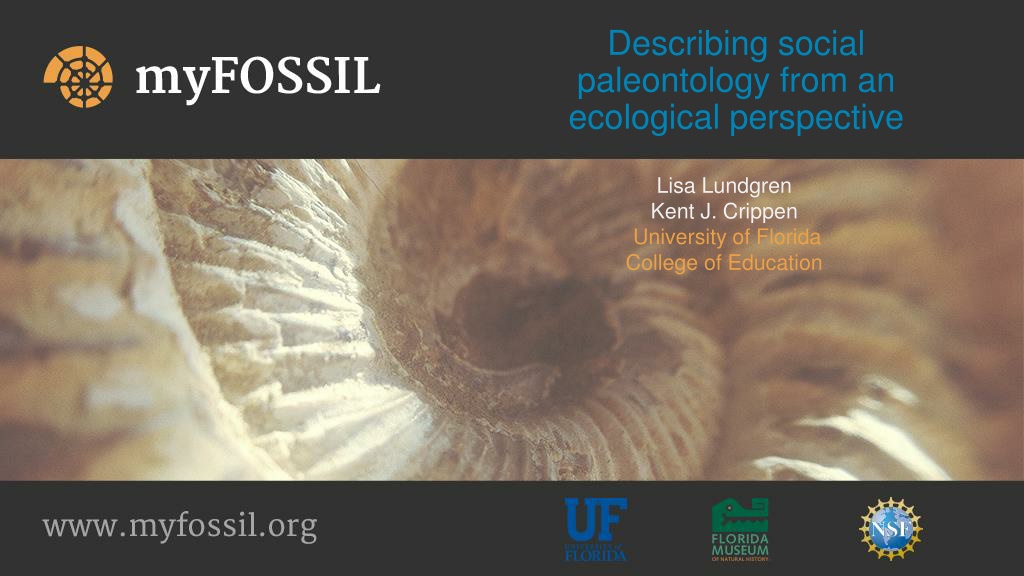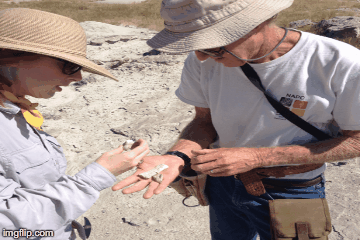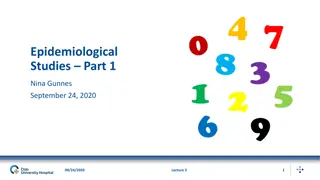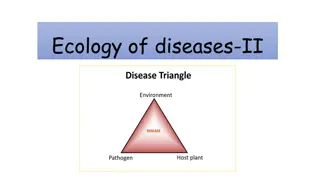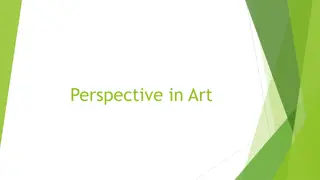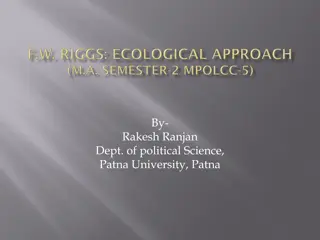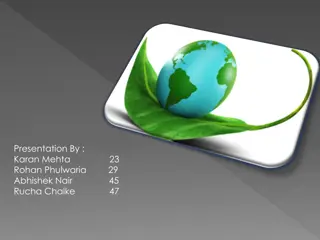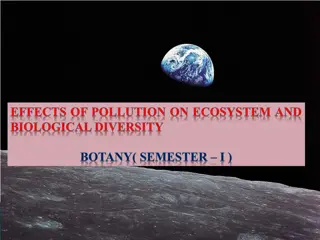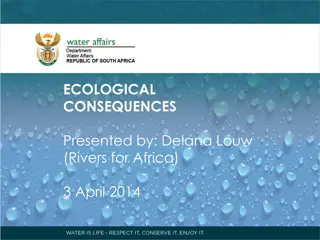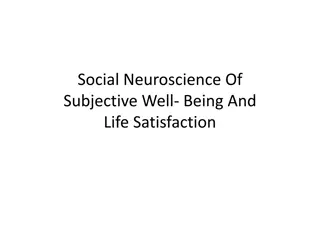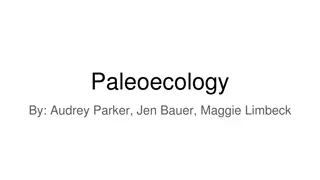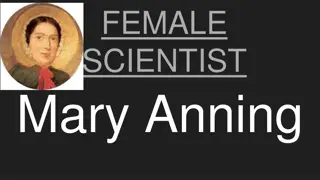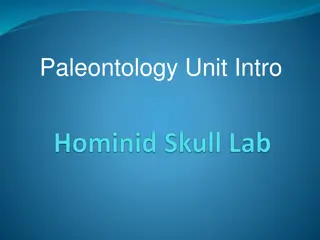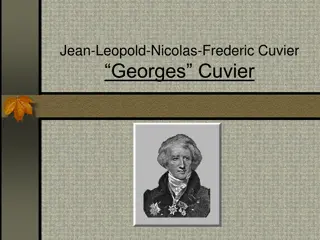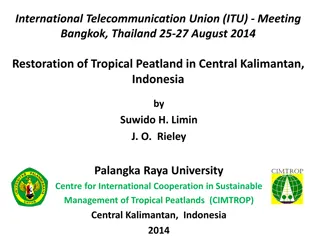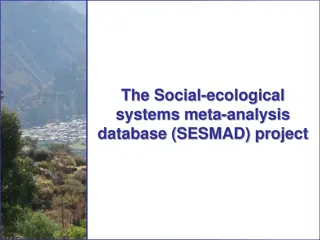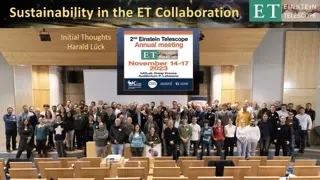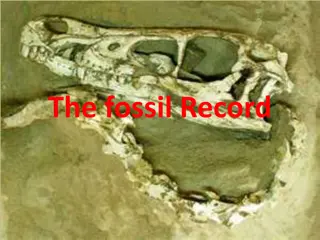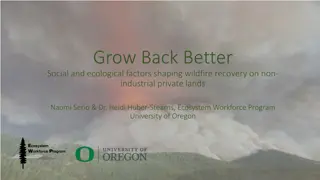Social Paleontology From an Ecological Perspective
Social paleontology, practiced by paleontologists in various habitats, integrates face-to-face and online interactions for collaborative inquiry. The ecological learning perspective highlights the importance of social interactions in learning across platforms like myFOSSIL, Facebook, Twitter, and museums. Research explores participant nature and shared practices in digital habitats.
Download Presentation

Please find below an Image/Link to download the presentation.
The content on the website is provided AS IS for your information and personal use only. It may not be sold, licensed, or shared on other websites without obtaining consent from the author. Download presentation by click this link. If you encounter any issues during the download, it is possible that the publisher has removed the file from their server.
E N D
Presentation Transcript
Describing social paleontology from an ecological perspective Lisa Lundgren Kent J. Crippen University of Florida College of Education
Background Unite paleontologists, regardless of experience and/or expertise experience and/or expertise, in the shared practice of social paleontology social paleontology. Community of Practice Community of Practice (Wenger, 2000; Wenger, McDermott, & Snyder, 2002; Wenger, White, & Smith, 2009) Domain Domain: science of paleontology People People: paleontologists (regardless of expertise) Practice Practice: face-to-face and computer- supported collaborative inquiry of the natural world through the collection, preparation, and curation of fossils (Crippen, Dunckel, MacFadden, Ellis & Lundgren, 2015). regardless of
Ecological perspective on learning College campuses From an ecological learning ecological learning perspective perspective, social paleontology is enacted across various habitats various habitats that exist exist within a larger ecosystem (Brofenbrener, 1978) Conferences myFOSSIL Field trips Facebook Fossil club meetings Twitter Museums The social interactions between people social interactions between people allow for individual actions that occur only only as a result of such interactions (Heft, 2013)
Which habitats are involved in social paleontology? Physical habitats Physical habitats- -offline social spaces offline social spaces Digital habitats Digital habitats- -online social spaces online social spaces College campuses College campuses myFOSSIL Conferences myFOSSIL Conferences Field trips Facebook Facebook Field trips Fossil club meetings Twitter Fossil club meetings Twitter Museums Museums
Research questions What is the nature of participants nature of participants expressed across the digital habitats digital habitats of FOSSIL s Facebook Facebook, Twitter Twitter, and myFOSSIL What forms of shared practice shared practice are expressed across these digital habitats? myFOSSIL? expressed
Data Sources Data from October 2015-December 2016 Sources Intake survey for user types Example question: Are you currently or have you ever been employed as a professional paleontologist? Publicly accessible social media data myFOSSIL user interaction data Three data sources compiled and linked
Method: Social Network Analysis Social network analysis using NodeXL (Hansen, Shneiderman, & Smith, 2009) Graph types Fruchterman- reingold graphs Force-directed graphs Circle graphs Shows connections between clusters
Results What is the nature of participants participants expressed in the myFOSSIL digital habitat? habitat? nature of digital Amateur Paleontologist Professional Paleontologist
Results What is the nature of the nature of the relationships relationships created in the myFOSSIL digital habitat? Amateur Paleontologist Professional Paleontologist
Results myFOSSIL amateur-professional friendship connections What is the nature of the relationships of the relationships created in the myFOSSIL digital habitat? nature Amateur Paleontologist Professional Paleontologist
Results myFOSSIL group connections What forms of shared practice shared practice are expressed expressed in the digital habitat of myFOSSIL? Group Amateur Paleontologist Professional Paleontologist
Results Of the myFOSSIL community, who myFOSSIL Facebook users who is participating in other other digital habitats digital habitats? myFOSSIL Twitter users Amateur Paleontologist Professional Paleontologist Amateur Paleontologist Professional Paleontologist
Results What s the nature of participants participants? Majority amateurs myFOSSIL The relationships among digital habitats Most everyone everyone on Facebook More professionals professionals on Twitter What forms of shared practice practice exist? Use groups groups to connect, most professionals professionals are connected 1+ amateur amateur paleontologist on myFOSSIL nature of College campuses myFOSSIL Conferences amateurs on Facebook Field trips shared Twitter Fossil club meetings connected 1+ Museums
Conclusions We think about social paleontology but Defining the learning ecology Provides evidence for learning within a community of practice Social network analysis Academic and practical value Data about previously elusive social processes and can be leveraged to highlight important content and contributors. (Smith et al, 2009)
Join in social paleontology Questions or comments? TheFossilProject @projectfossil lisa.lundgren@ufl.edu www.myfossil.org @llundgren
References Crippen, K. J., Ellis, S., Dunckel, B. A., Hendy, A. J. W., & MacFadden, B. J. (2016). Seeking shared practice: a juxaposition of the attributes and activities of organized fossil groups with those of professional paleontology. Journal of Science Education and Technology, 25: 731. doi:10.1007/s10956-016-9627-3 Hansen, D. Shneiderman, B. & Smith, M. A. (2009) Analyzing social media networks with NodeXL. Burlington, MA: Morgan Kaufmann. MacFadden, B. J., Lundgren, L. M., Crippen, K. J., Dunckel, B. A., & Ellis, S. (2016). Amateur paleontological societies and fossil clubs, interactions with professional paleontologists, and social paleontology in the United States. Palaeontologica Electronica, 19:2.1E, 1-19. Smith, M. A., Shneiderman, B., Milic-Frayling, N., Mendes Rodrigues, E., Barash, V., Dunne, C., Gleave, E. (2009). Analyzing (social media) networks with NodeXL. In Proceedings of the fourth international conference on Communities and technologies - C&T 09 (p. 255). New York, New York, USA: ACM Press. doi:10.1145/1556460.1556497 Wegner, E. (1998). Communities of Practice: Learning, Meaning, and Identity. Cambridge, U.K.: Cambridge University Press.
